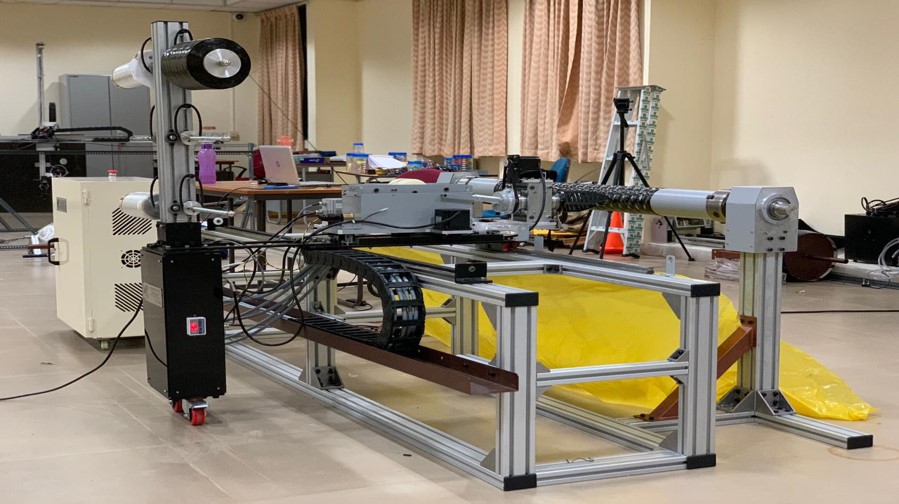Harnessing High-Temperature Precision: Innovations in Industrial Heating Solutions

In today’s industrial landscape, achieving high-temperature precision is paramount for optimizing processes and ensuring exceptional product quality.
This article delves into the exciting world of industrial heating solutions, exploring the latest innovations that enable precise and efficient high-temperature heating. From advancements in technology to their impact on various industries, we uncover the transformative power of these innovations in revolutionizing industrial processes.
Understanding High-Temperature Heating
High-temperature heating plays a critical role in industries such as manufacturing, aerospace, automotive, and electronics. It involves achieving and maintaining precise temperature levels to meet specific process requirements and ensure optimal results.
Conventional Industrial Heating Methods
Traditional heating methods, including open flames, electric resistance heating, and gas-fired systems, have limitations in achieving high-temperature precision. Challenges such as uneven heating, slow heating rates, and energy inefficiency have prompted the development of innovative heating solutions.
Innovations in Industrial Heating Solutions
To overcome the limitations of conventional heating methods, significant advancements have been made in industrial heating solutions. Let’s explore some of the innovative technologies that are revolutionizing high-temperature heating in various industries:
- Induction Heating: Induction heating utilizes electromagnetic fields to generate heat within the material itself. This method offers precise and localized heating, allowing for rapid temperature changes and consistent results. Induction heating is particularly well-suited for processes that require fast heating rates, such as metal melting, heat treatment, and surface hardening.
- Infrared Heating: Infrared heating relies on electromagnetic radiation to directly transfer heat to the object being heated. This technology enables efficient and targeted heating, eliminating the need for preheating and reducing energy consumption. Infrared heating finds applications in drying, curing, and surface heating processes, where precise temperature control is essential.
- Microwaves and RF Heating: Microwave and radio frequency (RF) heating utilize electromagnetic waves to generate heat within the material. These technologies offer rapid and uniform heating, even for materials with poor heat conductivity. Microwaves and RF heating are commonly used in industrial applications such as food processing, polymer curing, and drying of materials with high moisture content.
- High-Temperature Electric Heating: Advancements in electric heating technology have enabled the development of high-temperature electric heating solutions. These systems utilize advanced heating elements and control mechanisms to achieve precise and efficient heating at extremely high temperatures. High-temperature electric heating is employed in industries such as semiconductor manufacturing, aerospace, and glass production.
- Drum Heating Solutions: Specifically designed for industrial applications, drum heaters provide efficient and controlled heating for various substances stored in drums or containers. They are equipped with adjustable temperature controls and insulation to ensure the safe and consistent heating of materials such as chemicals, oils, or viscous substances. Drum heaters are essential in industries that require precise temperature maintenance and material handling.
Advantages and Applications of High-Temperature Precision
The use of high-temperature precision heating solutions brings numerous advantages to industrial processes. Improved efficiency, productivity, and product quality are achieved, leading to cost savings and enhanced competitiveness. Industries such as manufacturing, aerospace, automotive, and electronics benefit from the precise control and consistent results offered by these innovations.
Considerations for Implementing High-Temperature Heating Solutions
When adopting high-temperature precision heating solutions, factors such as the specific process requirements, safety considerations, equipment compatibility, and maintenance requirements must be carefully evaluated. Implementing proper safety measures and ensuring operator training is essential to mitigate potential risks.
Future Trends and Outlook
The future of industrial heating solutions looks promising, with ongoing advancements and emerging trends. Predictive and adaptive control systems, advanced materials for heating elements, and integration with automation and IoT technologies are expected to enhance high-temperature precision further and optimize industrial processes.
Conclusion
Harnessing high-temperature precision through innovative heating solutions has revolutionized the industrial sector. Achieving and maintaining precise temperature levels enhances productivity, product quality, and overall process efficiency. As industries continue to push the boundaries of technology, the future holds even more exciting possibilities for high-temperature heating solutions.
In a world driven by precision and efficiency, industrial heating innovations pave the way for remarkable advancements, making high-temperature processes more reliable, safe, and effective than ever before.








